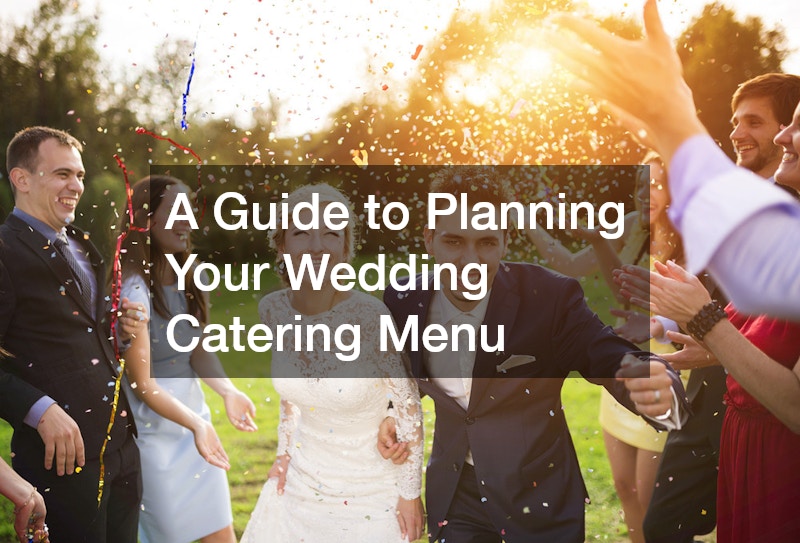
Planning a wedding involves a multitude of decisions, each contributing to the perfect execution of your dream day. Among these considerations, wedding catering holds significant importance. Not only does it involve a substantial portion of your budget, but it also sets the tone for your guests' experience.
Video Source
This guide is designed to help you navigate the maze of choices related to creating your wedding catering menu, ensuring it's both memorable and fitting for your unique celebration. By following the steps laid out below, you can craft a menu that delights your guests and reflects your personal style.
Before diving into menu selections, it's crucial to understand the various catering options available. Traditional choices include plated meals, buffet-style settings, and family-style serving. Each of these offers distinct advantages and can be tailored to fit your event's formality and guest count. Plated meals are often seen as elegant, providing each guest with individual attention while allowing for precise portion control. Alternatively, buffets tend to encourage social interaction and offer a range of options for guests with dietary preferences or restrictions.
Beyond the conventional choices, couples are increasingly exploring unique catering styles like food trucks, stations, or cocktail receptions with heavy hors d'oeuvres. These options can infuse a sense of personality and creativity into your celebration. Food trucks, for example, bring a casual vibe and can serve a variety of cuisines, making them popular for outdoor or rustic-themed weddings. Stations provide an interactive experience, allowing guests to sample different types of food at their leisure. Understanding these options can help you determine what aligns with your vision, venue, and budget.
Moreover, it's beneficial to think about seasonality and how it can influence your wedding catering menu. Seasonal ingredients are often fresher and more flavorful, providing a superior dining experience. They also tend to be more cost-effective, as they are readily available and don't require extensive transportation or storage. Incorporating local and seasonal ingredients not only enhances the taste but also reduces the environmental impact of your event. This approach to planning ensures that your menu is not only delicious but also sustainable.
Once you understand your catering options, the next step is selecting the ideal menu items. Begin by considering the dietary needs and preferences of your guests. Common dietary considerations include vegetarian, vegan, gluten-free, and nut-free options, ensuring all attendees can enjoy their meal without concern. Communicating these needs to your caterer early on can facilitate a smooth planning process. In addition to dietary restrictions, think about incorporating a variety of flavors and textures to create a dynamic and enjoyable dining experience.
Discuss potential menu items with your caterer that align with your wedding theme, cultural heritage, or personal favorites. If your family has a beloved dish, consider including it as a nod to tradition and to create a sense of familiarity. Additionally, explore the possibility of crafting a signature item or dish that holds meaning for you and your partner. This adds a personalized touch to your menu, making your wedding day unique and memorable. A balanced menu should include an assortment of appetizers, entrees, and desserts to cater to different taste preferences.
Pairing the right beverages with your menu is equally important. Work with your caterer to recommend wines and cocktails that complement your chosen dishes, enhancing the overall dining experience. Offering a selection of non-alcoholic beverages is also essential, providing alternatives for children and guests who do not drink alcohol. Remember, the ambiance and enjoyment of the meal can be significantly influenced by thoughtfully paired beverages. Ultimately, the goal is to curate a cohesive and delightful culinary experience that resonates with your guests and reflects your unique style.
As your choices take shape, the next step involves finalizing all catering details and scheduling a tasting. A tasting is an opportunity to sample your menu and make any necessary adjustments before the big day. This is your chance to assess not only the flavor but also the presentation of each dish. Note how the dishes are plated, as this will impact the visual appeal of your event. Also, use this time to discuss any final adjustments with your caterer, ensuring that the menu aligns perfectly with your expectations.
In addition to the tasting, finalize logistical details such as the timeline for food service and staffing requirements. Adequate staffing ensures efficient service and allows guests to enjoy their meals without delay. It's also essential to plan for any rental needs, such as dishes, glassware, or table settings, which will complement your overall wedding theme. Confirm these details with your caterer well in advance to avoid last-minute surprises. Together, these elements contribute to the seamless execution of your wedding catering plan.
.